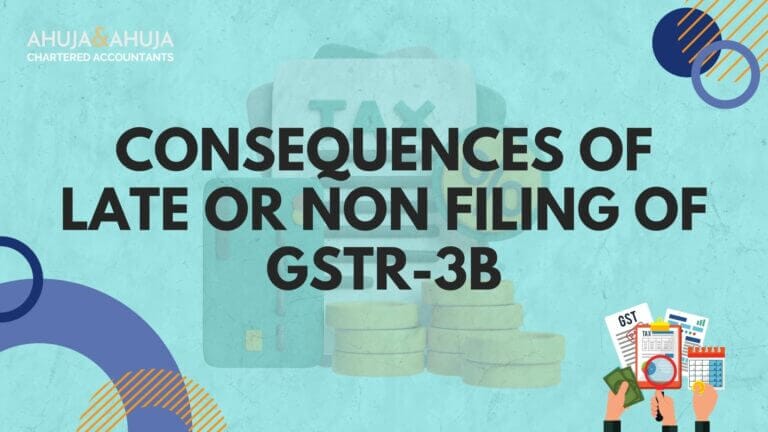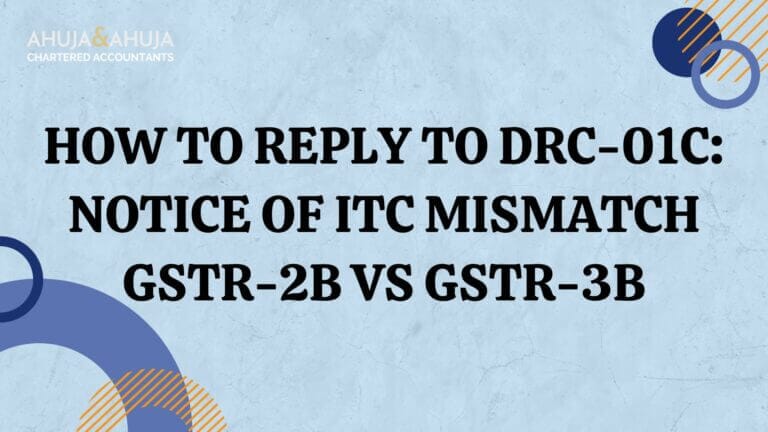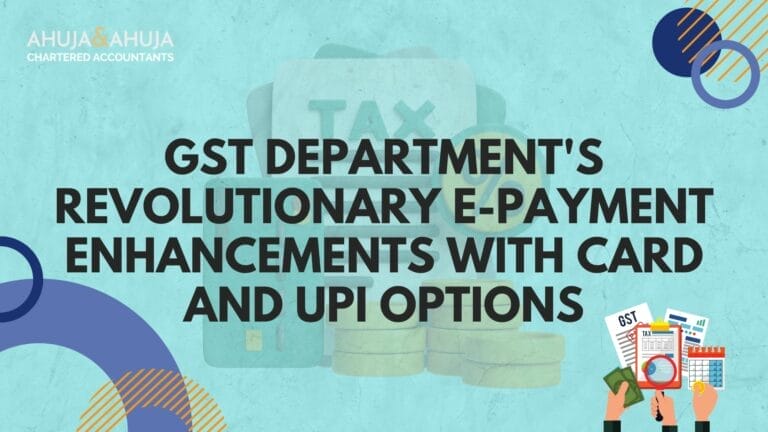GST Registration can take upto 30 days even after Aadhar Authentication
Understanding the Impact of New GST Registration Protocol on Indian Entrepreneurs
The Goods and Services Tax Network (GSTN) has been at the core of India’s ambitious tax reform since its inception in 2017.
It’s a common portal where taxpayers can manage various aspects of GST compliance, making it a significant institution for every Indian entrepreneur. From GST registration, filing tax returns to viewing transactions, GSTN’s scope of services caters to a widespread user base.
Registering for GST has been a process which seeks to be relatively quick and hassle-free for taxpayers. However, a recent change in the protocol may raise some eyebrows.
GSTN has stated that post successful Aadhaar authentication, the GST registration process may take up to 30 days if the application is flagged for extra scrutiny.
While Aadhaar authentication has always played a crucial part in the registration process, this step now becomes even more significant. A delay in the processing of the application can mean a halt in a gamut of GST transactions, which we’ll further elaborate in this article.
A slowing speed of registration processing possesses a host of implications for taxpayers. Therefore, being A-head of the curve with respect to recent changes becomes crucial. What is ARN in GST? is a read that will help you understand the registration process better and provide a wider context to the conversation.
In the subsequent sections of this article, we will delve deeper into the Aadhaar authentication’s role in GST, the recently updated protocol, and how these changes impact the ease of doing business in India.
The GST Registration Process
GST registration is akin to obtaining a passport to the world of enterprise in India. Similar to a passport, a GST number empowers entities to embark on commercial voyages, be it inter-state or intra-state.
It’s crucial for the growth and legal compliance for businesses of all sizes. This process involves several steps confirming the identity and validity of the business applying for it.
After registration, a unique GST number is granted which becomes the identity of the business for all GST-related compliance.
Aadhaar’s Role and the Clarification
Aadhaar authentication plays a pivotal role in the GST registration process – it serves as a means of electronic verification of the applicant using Aadhaar number, which expedites the whole process.
The simplicity of using Aadhaar hastens the pace at which the initial verifications are done. However, as per the latest update, if the GSTN flags an application for extra scrutiny, termed ‘detailed verification’, then despite the successful Aadhaar authentication, the registration process could span up to 30 days from the date of submission.
To better manage GST transactions and stay compliant, business owners are encouraged to take advantage of comprehensive services such as GST return filing, which help maintain accurate and timely submissions.
The clarification issued by GSTN is in alignment with Rule 9 of the Central Goods and Services Tax (CGST) Rules, 2017, which pertains to the verification and approval of the GST registration applications. This is seen as a step towards increased due diligence and prevention of fraudulent activities.
The GSTN’s Directive
Outlined in Rule 9 GST Rules and Regulations, the GSTN aims to ensure the legitimacy of the businesses registering under the GST.
This procedural update emphasizes doing rigorous checks wherein some applications, based on their risk criteria, may warrant additional verification.
The logic behind this procedural update could be understood as a quality over speed trade-off, ensuring that the registrations processed are of high integrity.
Implications of Updated Aadhaar Authentication Procedure
With great prudence comes a bit of patience. Consequently, the verification procedure introduced by GSTN implies a significant waiting period for entrepreneurs. During this 30-day window, several limitations are imposed on applicants:
- Business Mobilization: The inability to transact under GST hampers initial business momentum. Entrepreneurs keen on setting the ground running might find this waiting period challenging.
- Procurement and Sales: One cannot legally procure goods and services under the business’s name without a GST number, leading to complications in stocking up inventories or establishing trade relations.
- Input Tax Credit: A pivotal component of GST is claiming Input Tax Credit (ITC). With the absence of a GSTIN, these credits cannot be claimed, causing financial strain.
- Invoicing and Compliance: Issuing invoices and other compliance documents are contingent on possessing a valid GSTIN; hence, the delay may affect the financial planning and reporting of a business.
A Close Look at GST Registration Protocol
As per Rule 8 sub-rule (4A), the authentication of an applicant’s Aadhaar number is a streamlined step intended to fast-track the registration approval.
However, when Rule 9(aa) comes into play, indicating additional verification based on risk parameters, it introduces an extended span of scrutiny. This is integrated with the GSTN’s risk management system, which flags high-risk entities for more detailed inspections.
While the updated process intends to fortify the GST infrastructure against potential misuse, it inadvertently imposes a hold on the business’s operational capabilities. This paradigm shift necessitates businesses to navigate through these procedural waters with heightened awareness and preparedness.
In the forthcoming section, we will explore the ramifications this could have on the ease of doing business in India and the cascade of effects stemming from delayed GST registration.
Navigating the Consequences for Taxpayers
Having understood the procedural changes and their immediate implications, let’s take a broader view of the repercussions this amended protocol might have on the commercial environment.
- Delayed Market Entry: The new registration timeline could potentially defer businesses from entering the market promptly. This lag can affect competitive positioning and market capture for new entrants.
- Operational Setbacks: New ventures might experience operational drawbacks as they are not able to stock up on the inventory or deliver services without a GST number.
- Financial Hurdles: Working capital could be tied up as the Input Tax Credit remains inaccessible during the interim, impacting the cash flow crucial for fledgling businesses.
- Ease of Doing Business: India’s ease of doing business ranking could be affected by such measures. Despite the intent to ensure a foolproof system, it is crucial that these measures do not detrimentally impact the business environment.
Therefore, for new businesses, this interim might be best utilized by planning, strategizing, and understanding the nuances of the GST framework better.
For those awaiting GST registration, it may also be a time to get acquainted with regulations and compliances such as Tax Collection at Source (TCS) under GST, which will be relevant once the registration is obtained.
Striving for Balance Between Vigilance and Efficiency
The adjustment to the GST registration process is a testament to GSTN’s commitment to curbing malpractices.
While it underlines the seriousness with which each application is assessed, GSTN endeavors to maintain an equilibrium that does not overly encumber genuine businesses aiming for timely launch and operations.
It’s clear that prospective taxpayers need to not only align with this updated system but also plan their business activities to bridge the impact of this 30-day period. The entrepreneurial spirit in India is resilient and adaptive, and thus, it’s confident that the ecosystem will adjust to these changes efficiently.
In conclusion, while the revised GST registration protocol may introduce delays, it is incumbent upon businesses to anticipate these changes and prepare accordingly.
An informed approach, coupled with strategic planning, can help mitigate the potential setbacks and pave the way for a smooth transition into the arena of goods and services trade.
Disclaimer
The materials provided herein are solely for educational and informational purposes. No attorney/professional-client relationship is created when you access or use the site or the materials. The information presented on this site does not constitute legal or professional advice and should not be relied upon for such purposes or used as a substitute for professional or legal advice.







